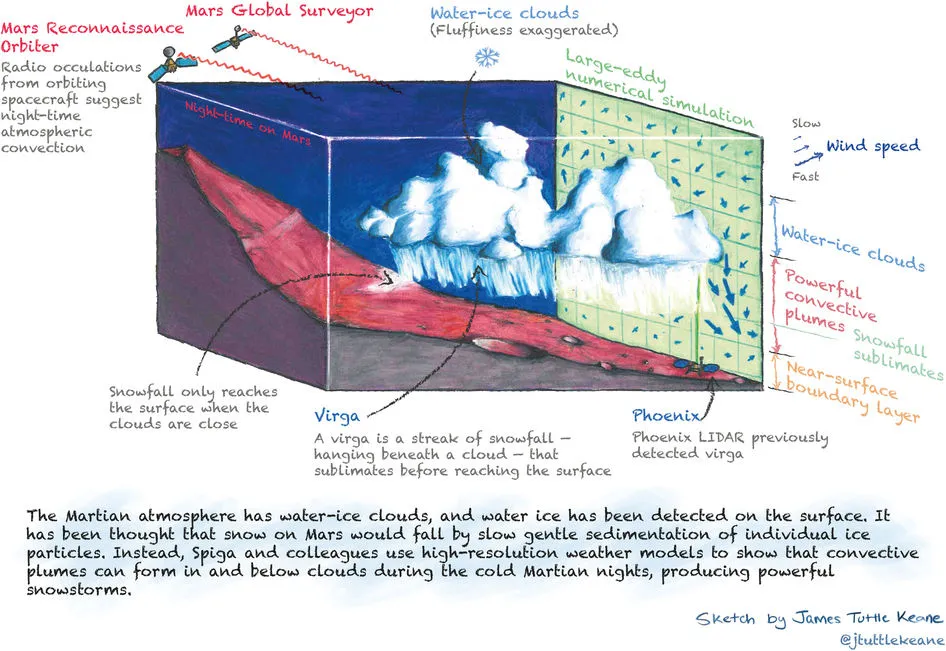Violent Snowstorms May Rack the Martian Night
Simulations show how the water snow falling on Mars may fall much differently than we’re used to here on Earth
/https://tf-cmsv2-smithsonianmag-media.s3.amazonaws.com/filer/27/a1/27a17eba-7146-4895-b5dc-459cca728100/pia19400.jpg)
The darkness of the night could bring flurries of white snow to the surface of the Red Planet, according to new simulations of Martian weather.
Snow was first spotted falling on Mars in 2008 by the Phoenix lander. While made of frozen water just like Earth snow, this Martian snow forms and falls nothing like we're used to, reports Ashley Yeager for Science News. If it slowly accumulated in clouds and then fell in clumps of ice like Earth snow, it would have fallen far too slowly in Mars' weak gravity to explain the what the Phoenix had spotted.
To decipher the patterns of Martian weather, researchers with the French National Center for Scientific Research spent nearly four years creating a complex model of the planet's atmosphere, especially its clouds, reports Charles Choi for Space.com. And the resulting simulation, published this week in the journal Nature Geoscience, helped explain Martian snow.
It turns out, the Martian atmosphere churns violently at night, with rapidly dropping temperatures, which cools atmospheric water and whips up vertical winds of around 22 miles per hour, which can shoot snow from thin clouds toward the planet's surface. These are winds one would expect to see in a thunderstorm, not a gentle snow shower, and they can last for hours.
"The night-time weather is much more intense than had been expected," co-author David Hinson, an atmosphere researcher with the SETI Institute, says in a statement.
It's not yet clear how much, if any, of this snow actually reaches the Martian surface, reports Nadia Drake for National Geographic, but researchers think this snow could be a key part of the Martian water cycle.
Another consideration could be how these turbulent storms affect human settlement and exploration of Mars, reports Andy Coghlan of New Scientist. These may not be the violent dust storms that nearly killed Matt Damon in The Martian, but these snowstorms could damage equipment or injure people.
It's also still unclear whether the snow that Phoenix saw could be a result of this turbulent phenomenon, notes Loren Grush for The Verge. The simulations modeled weather near the equator, while the lander observed the snow near Mars' northern pole. In the future, researchers plan to extend their model to look at snowstorms globally on Mars, reports Choi. It could be that humans won't need to leave behind a winter wonderland when settling the Red Planet.
